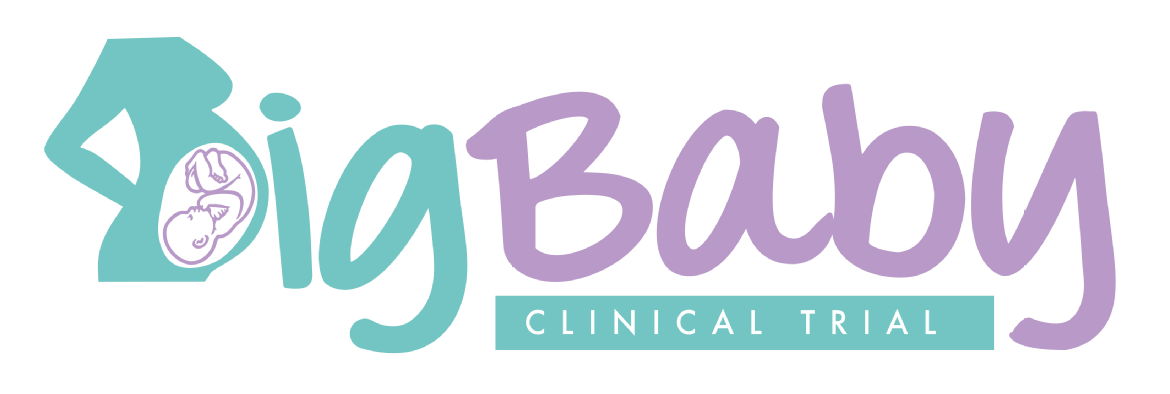References
1. Royal College of Obstetricians and Gynaecologists. Green–top Guideline No. 42. Shoulder Dystocia. 2 ed. London, 2012.
2. Hansen A, Chauhan SP. Shoulder dystocia: Definitions and incidence. Seminars in Perinatology 2014;38(4):184-88.
3. Anderson A. Ten years of maternity claims: an analysis of the NHS Litigation Authority data – key findings. Clinical Risk 2013;19(1):24-31.
4. Ye J, Torloni MR, Ota E, et al. Searching for the definition of macrosomia through an outcome-based approach in low- and middle-income countries: a secondary analysis of the WHO Global Survey in Africa, Asia and Latin America. BMC Pregnancy and Childbirth 2015;15(1):324.
5. Larkin JC, Speer PD, Simhan HN. A customized standard of large size for gestational age to predict intrapartum morbidity. American Journal of Obstetrics & Gynecology 2011;204(6):499.e1-99.e10.
6. Cha H-H, Kim J-Y, Choi S-J, et al. Can a customized standard for large for gestational age identify women at risk of operative delivery and shoulder dystocia?, 2012:483.
7. Pasupathy D, McCowan LME, Poston L, et al. Perinatal Outcomes in Large Infants Using Customised Birthweight Centiles and Conventional Measures of High Birthweight. Paediatric and Perinatal Epidemiology 2012;26(6):543-52.
8. Sjaarda LA, Albert PS, Mumford SL, et al. Customized large-for-gestational-age birthweight at term and the association with adverse perinatal outcomes. American Journal of Obstetrics & Gynecology 2014;210(1):63.e1-63.e11.
9. Montgomery (Appellant) v Lanarkshire Health Board (Respondent) (Scotland): Supreme Court, Judgment date. 11 Mar 2015.
10. Norris T, Johnson W, Farrar D, et al. Small-for-gestational age and large-for-gestational age thresholds to predict infants at risk of adverse delivery and neonatal outcomes: are current charts adequate? An observational study from the Born in Bradford cohort. BMJ Open 2015;5(3).
11. Boulvain M, Irion O, Dowswell T, et al. Induction of labour at or near term for suspected fetal macrosomia. Cochrane Database of Systematic Reviews 2016(5).
12. Magro-Malosso ER, Saccone G, Chen M, et al. Induction of labour for suspected macrosomia at term in non-diabetic women: a systematic review and meta-analysis of randomized controlled trials. BJOG: An International Journal of Obstetrics & Gynaecology 2016:[Epub ahead of print].
13. Boulvain M, Senat M-V, Perrotin F, et al. Induction of labour versus expectant management for large-for-date fetuses: a randomised controlled trial. The Lancet 2015;385(9987):2600-05.
14. Heslehurst N, Ells LJ, Simpson H, et al. Trends in maternal obesity incidence rates, demographic predictors, and health inequalities in 36 821 women over a 15-year period. BJOG: An International Journal of Obstetrics & Gynaecology 2007;114(2):187-94.
15. Vahratian A, Zhang J, Troendle JF, et al. Maternal prepregnancy overweight and obesity and the pattern of labor progression in term nulliparous women. Obstetrics and Gynecology 2004;104(5):943-51.
16. Public Health England. About Obesity: Prevalence Available from: https://www.noo.org.uk/NOO_about_obesity/maternal_obesity_2015/prevalence 2017 [
17. Poston L, Bell R, Croker H, et al. Effect of a behavioural intervention in obese pregnant women (the UPBEAT study): a multicentre, randomised controlled trial. The Lancet Diabetes & Endocrinology 2015;3(10):767-77.
18. Plain English Campaign. Accreditation: The Crystal Mark 12345 Available from: http://www.plainenglish.co.uk/accreditation.html2016 [
19. Harvey S, Rach D, Stainton M, et al. Evaluation of satisfaction with midwifery care. Midwifery 2002;18.
20. Gusi N, Olivares PR, Rajendram R. The EQ-5D Health-Related Quality of Life Questionnaire. In: Preedy VR, Watson RR, eds. Handbook of Disease Burdens and Quality of Life Measures. New York: Springer New York, 2010:87-99.
21. Cox JL, Holden JM, Sagovsky R. Detection of postnatal depression. Development of the 10-item Edinburgh Postnatal Depression Scale. The British journal of psychiatry : the journal of mental science 1987;150:782-6.
22. Horowitz MJ, Wilner N, Alvarez W. The impact of event scale: A measure of subjective stress. Psychosomatic Medicine 1979;41:209-18.
23. Taylor A, Atkins R, Kumar R, et al. A new Mother-to-Infant Bonding Scale: links with early maternal mood. Archives of Women’s Mental Health 2005;8(1):45-51.
24. Perrelli JGA, Zambaldi CF, Cantilino A, et al. Mother-child bonding assessment tools. Revista Paulista de Pediatria 2014;32(3):257-65.
25. Avery K, Donovan J, Peters TJ, et al. ICIQ: A brief and robust measure for evaluating the symptoms and impact of urinary incontinence. Neurourology and Urodynamics 2004;23(4):322-30.
26. Moore GF, Audrey S, Barker M, et al. Process evaluation of complex interventions: Medical Research Council guidance. BMJ : British Medical Journal 2015;350.
27. MBRRACE-UK. MBRRACE-UK Confidential Enquiry into Maternal Deaths and Morbidity. 2017; Available from: https://www.npeu.ox.ac.uk/mbrrace-uk. Last accessed 15 December 2017.
28. Wisborg K, Barklin A, Hedegaard M, et al. Psychological stress during pregnancy and stillbirth: prospective study. BJOG: An International Journal of Obstetrics & Gynaecology 2008;115(7):882-85.
29. Patel S, Hee SW, Mistry D, et al. Identifying back pain subgroups; developing and applying approaches using individual patient data collected within clinical trials. Programme Grants for Applied Research 2016;4(10):1-314.
30. Anderson NH, Sadler LC, McKinlay CJD, et al. INTERGROWTH-21st vs customized birthweight standards for identification of perinatal mortality and morbidity. American Journal of Obstetrics & Gynecology 2015;214(4):509.e1-09.e7.
31. Kiserud T, Piaggio G, Carroli G, et al. The World Health Organization fetal growth charts: a multinational longitudinal study of ultrasound biometric measurements and estimated fetal weight PLOS Medicine 2017 In press.
32. Sculpher MJ, Claxton K, Drummond M, et al. Whither trial-based economic evaluation for health care decision making? Health Economics 2006;15(7):677-87.
33. Devlin N, Shah K, Feng Y, et al. Valuing health-related quality of life: An EQ-5D-5L value set for England. Research Paper 16/01. London: Office of Health Economics, 2016.
34. National Institute for Health and Care Excellence. Guide to the methods of technology appraisal. London: National Institute for Health and Care Excellence 2013.

